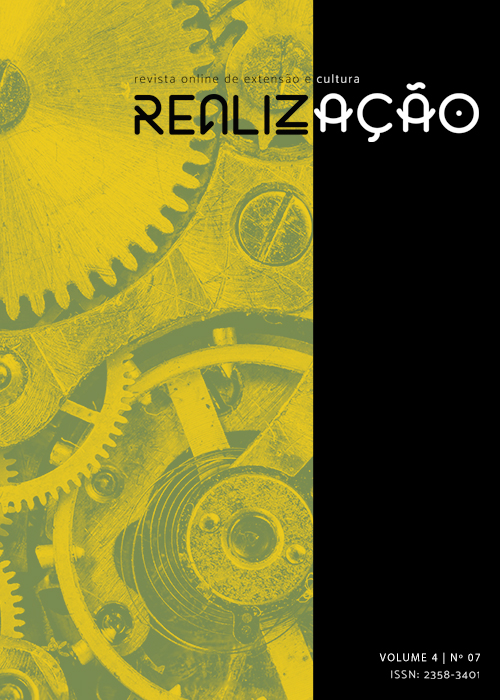Scientific illustration: the paths between art and science
Keywords:
História Natural. Ilustração Zoológica. Insetos Aquáticos. Taxonomia Zoológica.Abstract
A scientific illustrator of the natural world must master both the technical skills of illustration and aspects related to biological sciences. This is the moment when art and science go hand in hand. This work was carried out by an illustrator with a degree in Tourism and a biologist, who together will create a pictorial key for a family of aquatic insects. The illustrations were created using a stereomicroscope with a camera lucida and fiber optic light. The technique used was sketching on tracing paper with graphite and then applying it in India ink with a pen, based on pointillism and lines. Among the morphological characteristics most used to identify the Hydropsychidae family are the shape of the abdominal gills and the length of the anal claw. The details observed in the drawings highlight the dependence and importance of the information in the illustrations for a good zoological identification key. However, the scientific illustration technique is not always a common practice among researchers, requiring the help of an illustrator from other areas.
Downloads
References
ARAÚJO, A. Aplicações da ilustração científica em Ciências Biológicas.Trabalho de Conclusão de Curso (Graduação em Ciências Biológicas), Instituto de Biociências, Universidade Estadual Paulista, Rio Claro,2009.
ARAÚJO, A.M.; BRAGA, F.M.S.E;SOMERA, J.R. Aplicação da ilustração científica em ciências biológicas. Anais do XXI Congresso de Iniciação Científica da UNESP, São José do Rio Preto, p. 3157-3160, 2009.
BRAVO, F.; CALOR, A.R.Conhecendo os artrópodes do Semiárido.1.ed. –São Paulo: Métis Produção Editorial, 2016. 192 p.
GUARALDO, L. A ilustração jornalística, UNIrevista,v. 1, n. 3, p. 1-12, 2006.MERRIT, R.W. E CUMMINS, K. W. An Introduction to the Aquatic Insects of North America.Duduque: Kendal/ Hunt, Third Edition, 1996, 862p.
MUGNAI, R.; NESSIMIAN J.L.; BAPTISTA, D.F.Manual de Identificação de Macroinvertebrados Aquáticos do Estado do Rio de Janeiro.1ª. Edição, 2010, 174p.
PAPAVERO, N.; MARTINS, U.R. Itens da publicação taxonômica. In: Papavero, N.(org), Fundamentos Práticos de Taxonomia Zoológica: coleções, bibliografia, nomenclatura. 2ª. Edição, 1994.
PEREIRA, R.M.A.;FERREIRA, M.A. Ilustração científica na UFMG: a experiência do curso em ilustração botânica. Anais do 8º Encontro de Extensão da UFMG,Belo Horizonte, 2005.
RAPATÃO, V.S.; PEIRÓ, D.F. Ilustração científica na biologia: aplicação das técnicas de lápis de cor, nanquim (pontilhismo) e grafite. Revista da Biologia, v. 16, n. 1, p. 7-14. 2016.
WONG, L.A arte da ilustração científica. 2010
Downloads
Published
How to Cite
Issue
Section
License
Copyright (c) 2017 Nathaskia Silva Pereira, Mieko Nagata Ito, Jelly Makoto Nakagaki, Emerson Machado de Carvalho

This work is licensed under a Creative Commons Attribution-NonCommercial-ShareAlike 4.0 International License.
Autores que publicam nesta revista aceitam as normas de publicação, bem como, concordam com os seguintes termos:
(a) O Conselho Editorial se reserva ao direito de efetuar, nos originais, alterações da Língua portuguesa para se manter o padrão culto da língua, respeitando, porém, o estilo dos autores.
(b) Autores mantêm os direitos autorais e concedem à revista o direito de primeira publicação, com o trabalho simultaneamente licenciado sob a Creative Commons Atribuição-NãoComercial-CompartilhaIgual 4.0 Internacional que permite: Compartilhar — copiar e redistribuir o material em qualquer suporte ou formato e Adaptar — remixar, transformar, e criar a partir do material. A Creative Commons Atribuição-NãoComercial-CompartilhaIgual 4.0 Internacional considera os termos seguintes:
- Atribuição — Você deve dar o crédito apropriado, prover um link para a licença e indicar se mudanças foram feitas. Você deve fazê-lo em qualquer circunstância razoável, mas de nenhuma maneira que sugira que o licenciante apoia você ou o seu uso.
- NãoComercial — Você não pode usar o material para fins comerciais.
- CompartilhaIgual — Se você remixar, transformar, ou criar a partir do material, tem de distribuir as suas contribuições sob a mesma licença que o original.
- Sem restrições adicionais — Você não pode aplicar termos jurídicos ou medidas de caráter tecnológico que restrinjam legalmente outros de fazerem algo que a licença permita.


